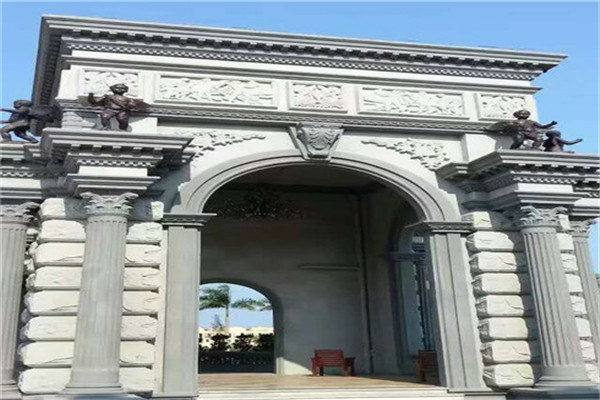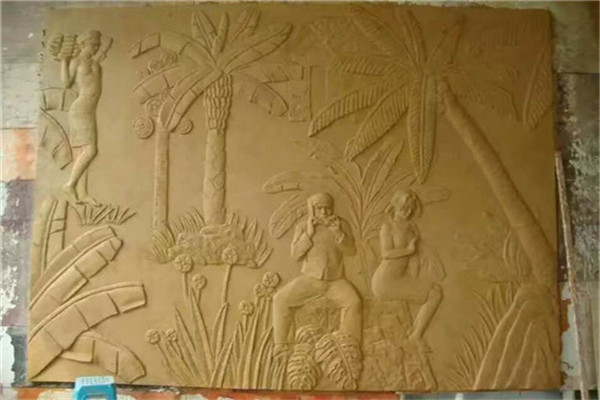
It is a three-dimensional plastic art to use certain material materials to produce works of art with solid image. Because the production methods are mainly sculpture and molding, it is called sculpture. According to the production process, sculpture can be divided into two categories: sculpture and sculpture. Subdivision is divided into carving, carving, molding, chiseling, carving, casting and other skills and techniques. According to genre, sculpture can be divided into memorial sculpture, urban garden sculpture, sculpture, tomb sculpture and exhibition sculpture. According to the style, sculptures can also be divided into head portrait, bust portrait, bust portrait, full body portrait, group portrait, etc. According to the technique and form of expression, sculpture can be divided into three categories: round sculpture, relief sculpture and openwork sculpture. Round sculpture, also known as "muddy sculpture", is a three-dimensional sculpture that is not attached to any background and can be viewed from all sides. The round sculpture is characterized by a solid image standing in space. When creating it, one must take into account its sense of volume and weight. When shaping the image, one must also take into account that people watch it from different angles. Relief, also known as "relief", is to carve a convex artistic image on the plane. According to the different degrees of surface relief, relief can be divided into high relief (high and low relief, deep relief) and low relief (low and low relief, shallow relief). The openwork is between the round sculpture and the relief sculpture. On the basis of the relief sculpture, it is made by hollowing out the background, but it does not leave the plane, just like a round sculpture attached to the plane background.

Bonsai sculpture is an ingenious combination of plant cultivation technology and garden art. It is an organic unity of landscape, basin and several frames. It is mainly composed of trees and shrubs, with rocks, people, buildings, etc. as the background, to show the beautiful scenery of giant trees in the wilderness, lush forests or ancient trees with thousands of years. There are evergreen pines and cypresses, such as five needle pine, black pine, larch, juniper, etc; Flowers and fruits include camellia, brome, June snow, longevity peach, fire thorn, pomegranate, etc; Miscellaneous trees include broad-leaved trees, shrubs such as elm, skeleton, etc. The miniature bonsai, which is the size of a wine cup, is planted in a basin with a wild state, exquisite and attractive plant shape. The cursive potted landscape refers to the shape of plants into a certain word, commonly used as elm with golden leaves, rose vine, etc. The chrysanthemum potted landscape is to use the small chrysanthemums grafted on Artemisia annua to twist the artemisia stem and form a vigorous tree trunk by manual traction; Modern green sculpture three-dimensional sculpture, also known as "three-dimensional painting", can enjoy different scenery from different angles and positions. There are combinations of rattan plants and buildings, such as green bridge columns, colorful landscape walls, etc. There are sculptures of grass and flowers, such as the charmingly naive giant panda, the beautiful peacock, the elephant with a long nose, the giraffe with a raised neck, flocks of cattle and sheep, monkeys playing on horseback, etc

Auxiliary tools for wood carving: mainly hammer, wood file, axe and saw. The purpose of the axe is to cut a large amount of wood with the help of paring. Pay attention not to use too much force when cutting. Do not cut straight up and down. The edge of the axe should be kept at about 45 degrees with the vertical wood grain, otherwise the wood will crack. Hainan GRC component wood file is mainly used in the fine blank stage of round carving, which can replace the flat knife to smooth the chisel marks for polishing; It can also take the place of round knife or oblique knife for hollowing. The function of the wood file is also that it can quickly adjust the modeling structure in a large area, and can be used in combination with the carving knife to make the turning and turning of the figure's clothing patterns vivid and smooth, with both virtual and real effects. The shape of hammers for wooden sculptures in Hainan is flat, flat, wide and square. The dimension of hammer face can be controlled at about 7 × 5.5 × 2.5 cm. Too narrow or too thick will affect the accuracy of the hammer's landing point and the uniformity of force. There are two kinds of hammers: wooden hammers and iron hammers. The wooden hammers generally use hardwoods with a large proportion of wood, such as mahogany, boxwood, sandalwood, beech and fruit trees. The specifications can be controlled at 27 cm in length, 55 cm in width and 45 cm in thickness; The grip is round and slightly flat, and the size is suitable for holding in the hand.

The art of carving various patterns and images on stones, usually also refers to sculpture handicrafts carved from stones. Chinese stone carving can be divided into bluestone carving, marble carving, white marble carving, talc carving, black crystal stone carving, colored stone carving, pebble carving, etc. Hui'an, Fujian, is famous for its bluestone carvings for architectural decoration and stone lions, among which the mouth of the stone lion contains stone beads that roll freely, and is famous in Southeast Asia. The marble carving in Yunnan is made from the marble of Diancang Mountain. Its patterns are like colored mountains and rivers, or dangerous peaks and valleys, or waterfalls follow the clouds. The inlaid furniture is unique. The white marble carvings in Quyang, Hebei, Fangshan, Beijing and other places were mainly used for palace architectural decoration in the Ming and Qing dynasties, such as Huabiao, Shishi high quality GRC component processing Railings, etc; Modern times are used for decoration of public and memorial buildings, such as the Great Hall of the People, the Monument to the People's Heroes, Chairman Mao's Memorial Hall, etc. Talc carvings in Haicheng, Liaoning Province and Laizhou, Shandong Province use small and cute animals as traditional varieties. The carvings of black crystal stone in Dongkou, Hunan and Lichuan, Hubei are dark and bright. Caishi carving is mainly produced in Qingtian, Zhejiang, Shoushan, Fuzhou, and Liuyang, Hunan. Pebble carvings are mainly produced in Lanzhou, Shenyang and other places. Yangjiang GRC component processing Stone carving techniques include intaglio (contour carving), shadow carving, relief, round carving (complete three-dimensional carving without any background), and openwork (also known as openwork). Shadow carving is a unique technique of Fujian Hui'an bluestone carving. It uses steel drills of different sizes to chisel on the bluestone, and uses the size, depth and density of the drill points to express the images of landscapes, birds, animals, people, flowers, etc.




